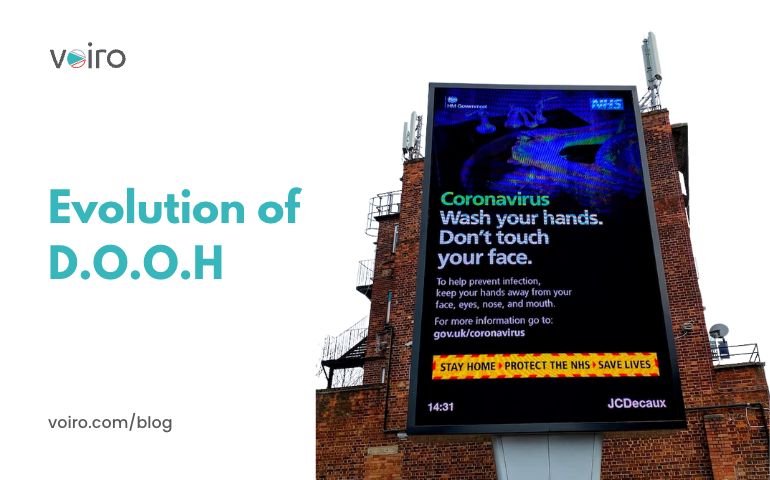From Egyptian obelisks to colourful posters, outdoor advertising has been an intrinsic part of community and communication from the beginning. In recent times, however, out-of-home (OOH) advertising has transformed to take the viewer experience to a different level. From bright interactive billboards to AR (augmented reality) led digital signages, real-time marketing and technological advancements have changed the game for out-of-home advertising.
Globally, more advertisers are including DOOH (Digital Out-of-Home) advertising in their marketing mix for a wider reach and a broader impact. As per GroupM’s ‘This Year Next Year 2022 Global End of Year Forecast’ , DOOH will supersede traditional OOH in terms of growth in the 2023-27 period. Also, DOOH’s global market share in outdoor advertising is expected to increase from 33.3% in 2022 to 39.6% in 2027.
DOOH over OOH
There are several reasons why DOOH is considered a performant and effective marketing tool.
- Interactive and Engaging: Augmented reality has allowed DOOH to be more interactive and appealing. Pepsi Max’s bus stop ads are a good example.
- Real-time information: DOOH displays allows advertisers to collect and analyse data on consumer behaviour and provide real-time information to the public. This medium enables advertisers to update messages based on real-time data and test it across several locations.
- Advanced Display Technology: Improvements in display technology, such as OLED displays and 4K resolution, make DOOH more impactful and visually appealing to consumers.
How has audience targeting evolved with DOOH
The evolution in DOOH has led to more engaging and personalised advertising experiences for consumers, resulting in better audience targeting. Following are some ways DOOH advertising is more effective in reaching the relevant audience.
- Real-Time Data Collection: DOOH displays are equipped with sensors and cameras that collect real-time data on consumer behaviour, allowing advertisers to target specific audiences based on location, demographics, and weather conditions.
- Integration with Other Platforms: DOOH displays can be integrated with other platforms, such as social media, allowing advertisers to target audiences based on their online behavior and preferences.
- Geo-Fencing: DOOH displays can use geofencing technology to target consumers within a specific geographic area, such as a shopping mall or a particular street.
- Contextual Targeting: Advertisers can target specific audiences based on the context of their environment, such as weather, time of day, or local events.
The Programmatic Leap
One of the factors driving growth in the DOOH space is the programmatic allocation of DOOH. As per a JCDecaux UK study titled “Programmatic DOOH: The Time is Now,” ‘majority (54%) of programmatic Digital Out-of-Home (pDOOH) marketers are involved in the planning and buying of at least one digital channel.’
So, what is Programmatic DOOH (pDOOH) and how does it help?
IAB and PwC report on Growing Programmatic DOOH: Opportunities and Challenges, DOOH Programmatic advertising “is defined as the use of automation in the buying, selling, or fulfilment of digital display advertising. Programmatic DOOH enables digital media buyers to set what audience they want to reach, the environments in which their ads should play, and other conditions that matter to a campaign, such as time of day, weather conditions, etc.”
In short, programmatic advertising in DOOH allows for more targeted and efficient audience targeting and ad placement, using data to serve relevant ads.
Advantages of a pDOOH campaign
Adding programmatic capabilities to DOOH advertising makes it more efficient by turning audience insights into actionable data. The following are some advantages of pDOOH advertising:
- Increased Efficiency: Programmatic advertising in DOOH allows for the efficient and automated buying and placement of ads, reducing the time and effort required for manual ad placement.
- More Contextually Relevant: This advertising format allows for more precise targeting of specific audiences based on location, demographics, footfall, temperature, and time of day, leading to more effective and relevant advertising.
- Real-Time Optimisation: Programmatic advertising in DOOH allows for real-time optimisation of ad campaigns, adjusting targeting, messaging, and even the creative in response to real-time data and performance metrics.
- Improved ROAS: The precise targeting and real-time optimisation offered by this advertising format can result in improved return on ad spend (ROAS).
- Optimised integration: A pDOOH campaign does not have to work in isolation. A well-placed QR code in a shopping mall can lead to a meal discount in a nearby restaurant or a special discount on an apparel app. Programmatic in DOOH advertising can help optimise a multi-channel advertising campaign.
Popular pDOOH ad formats
The possibilities for optimising a pDOOH campaign are endless. Following are some examples of programmatic DOOH ads that are widely used across different sectors:
- Location-based Ads: Displays near a shopping mall could show ads for nearby stores or promotions.
- Contextual Ads: Displays in an airport or a mall to show ads for nearby restaurants or duty-free shops.
Nike has used pDOOH to reach consumers with sports-related ads in high-traffic areas such as stadiums and gyms.
- Demographic-Based Ads: Displays in a college town could show ads for student-oriented products or services, or displays in a residential community could show ads for family-oriented products and services.
Spar: Ads on discounts or offers on groceries
- Time-Based Ads: Programmatic DOOH displays could show different ads during different times of the day, such as morning coffee promotions and happy hour promotions in the evening.
McDonald’s: McDonald’s has used programmatic DOOH to reach consumers with real-time promotions and menu items based on the time of day and consumer behaviour.
- Real-Time Ads: Displays showing real-time ads based on current events or promotions, such as a flash sale or a new product release.
Coca-Cola has used programmatic DOOH to target consumers in specific locations and serve real-time ads based on local weather and temperature.
Challenges in running a successful programmatic DOOH advertising campaign
Despite the many advantages of programmatic Digital Out-of-Home (DOOH) advertising, some challenges must be addressed to run a successful campaign. Some of the key challenges include:
- Lack of Standardisation: There is currently a lack of standardisation in the programmatic DOOH industry, making it difficult for advertisers to compare different solutions and platforms.
- Data Privacy: The use of data in programmatic DOOH advertising raises privacy concerns, especially regarding the collection and use of consumer data.
- Technical Complexity: The technology behind programmatic DOOH advertising can be complex, requiring high expertise to set up and manage campaigns effectively.
- Fragmented Inventory: The DOOH landscape is fragmented, with many different types of displays and networks, making it challenging for advertisers to reach their target audience through pDOOH advertising.
- Integration with Other Channels: Integrating pDOOH advertising with other marketing channels can be challenging, as advertisers must ensure their messages are consistent and aligned across all channels.
- Ad Fraud: Ad fraud is a major concern in programmatic advertising, including pDOOH advertising, as fraudsters can use technology to simulate ad impressions and deceive advertisers.









